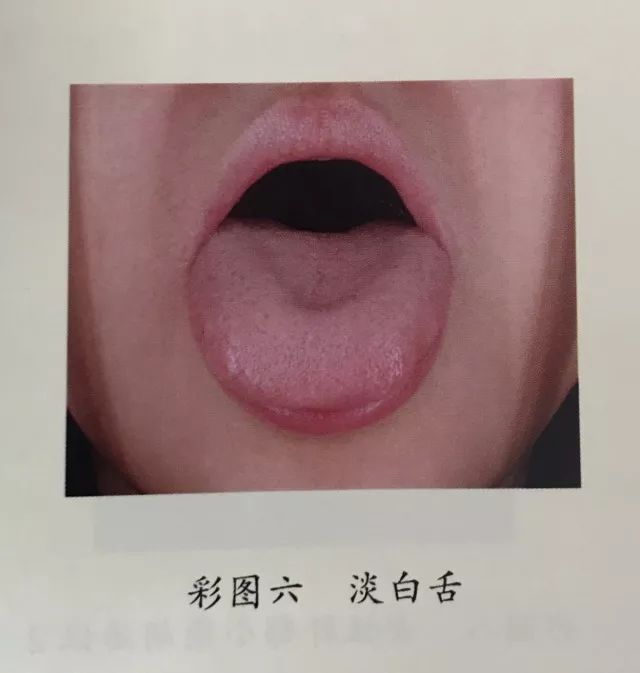Today’s reading material comes from Teacher Luo Dalun’s book “Yin Yang Yi Diao Bai Bing Xiao”.
The normal tongue color should be light red. If the tongue is pale, it often indicates a deficiency of blood or the presence of cold in the body. Some women with insufficient Qi and blood may have a tongue that appears pale white, indicating a need for blood tonification.
What does a pale tongue look like?
A few years ago, there was a woman who, before reaching forty, experienced amenorrhea, often not having her period for several months. She consulted many doctors, but to no avail. Initially, when she used progesterone, there was a response; however, once she stopped, there was no effect. Eventually, she became frightened, thinking that this situation was unsustainable, and thus she hesitated to use progesterone again. Although she tried some Chinese medicine, which was meant to regulate menstruation, it did not yield any results. Later, through a friend, she found me while I was still pursuing my doctorate. Since women were not allowed in the student dormitory, I ended up treating her in the reception area.
When I first heard about her case, I thought it would be challenging, considering she had been ill for so long and had seen many doctors. However, once I saw her tongue, I immediately felt that the situation was manageable. I noticed that her tongue was pale and had a very thin coating, indicating a deficiency of both Qi and blood.

Why did some doctors’ methods to regulate menstruation not work? It is because the patient was already deficient in both Qi and blood, leaving no menstruation to regulate. This is akin to a river that has run dry; no matter how much you dig the riverbed, it will not help unless you first replenish the water.
Therefore, I advised her not to rush and to nourish her body gradually. Once her Qi and blood were sufficient, her condition would naturally improve.
Traditional Chinese medicine believes that the spleen and stomach are the source of Qi and blood production. I prescribed her a formula to nourish the spleen and stomach, remembering that I used thirty grams of Bai Zhu (White Atractylodes) along with some blood-nourishing herbs, and advised her to go to bed early, as nighttime is the time for nourishing Yin and blood.
After a period of nourishment, I slightly added some herbs to regulate menstruation, and her period returned. Since then, her menstruation has been regular.
Currently, amenorrhea is quite common; some women experience it due to blood stasis, while others suffer from insufficient Qi and blood. It is worth noting that many cases of amenorrhea are caused by weight loss, where certain medications lead to spleen and stomach weakness, resulting in Qi and blood deficiency, and consequently amenorrhea.

In summary, a pale tongue indicates a lighter color than that of a normal person, also known as a pale tongue, primarily characterized by a decrease in the red hue. In TCM, this often signifies a deficiency of cold or a deficiency of both Qi and blood (see color chart).
Traditional Chinese medicine holds that a pale tongue in cases of Yang deficiency is characterized by a pale tongue body that is larger than normal, with a moist surface and a tender feel, often showing teeth marks on the edges. This type of pale tongue mainly appears in individuals with Yang deficiency and cold. If the tongue body is similar in size to normal or slightly smaller, and the surface is moist but not overly so, it indicates a deficiency of both Qi and blood.
| TCM Dietary Therapy and Health Preservation|
The best doctor is yourself, and the best hospital is your kitchen.
The best medicine is food, and the best efficacy is persistence.

